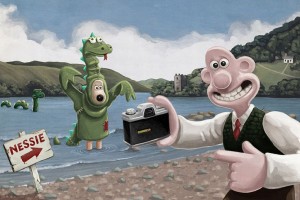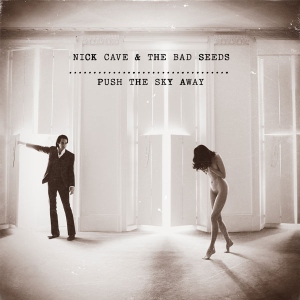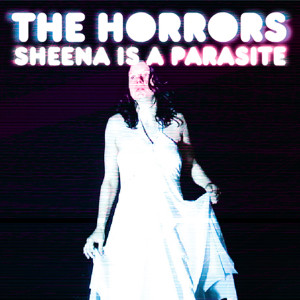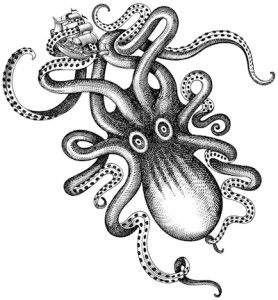Recent posts here at apoplectic.me have evinced my current obsession – mythical sea creatures from the Loch Ness Monster to mermaids to sirens. If one was of an apoplectic bent, one might even see evidence of perseveration.

[It’s even extended into the Apoplexy Tiny Letter distribution – here.]
What mythical creatures are attempts to explain what we don’t understand. I’ve read that mermaids were once an attempt to explain manatees. Or, to “convey the emergent understanding of the ancients that human beings were both one with and different from animals.” As well as having associations with ancient human and horse sacrifices, kelpies warned children of the dangers of the water, and cautioned “adolescent women to be wary of attractive young strangers“.

Selkies, which Friendoftheblogron mentioned in last week’s comments, are explained as having a number of possible origins, ranging from birth abnormalities to encounters with Inuit people to black-haired shipwrecked Spaniards washed ashore. The rather awesome branding and marketing of a new American black spiced rum has had me thinking about kraken. They’re variously associated with giant squid, octopuses (or octopodes), and crabs. The word is kraken “is the definite form of krake, a word designating an unhealthy animal or something twisted.”

Then last week, I stumbled into writing about 20,000 Days on Earth, Iain Forsyth and Jane Pollard’s documentary-musical-drama-biopic about Nick Cave. Of course, I hadn’t seen it at that point. But in the wake of writing about the movie, and further to my long-running interest in Cave, I sat down to watch it.

Befitting a film that needs three hyphens for its genre – I was always kind of an ostentatious bastard, Cave admits – 20,000 Days on Earth is pretty self-indulgent. But this is roughly post #180 of a personal blog, so I’ll let that go.
The introductory scene features Nick talking about how he ceased to be a human being some time in the late twentieth century. This is no doubt an acknowledgement that he is perceived as the character “Nick Cave”, but he tells us more. That he is like a cartoon cannibal, always looking for something for the pot. And and his wife is usually the one getting cooked.
Because there is an understanding whereby every secret, sacred moment is cannibalised and spat our as a song – inflated and distorted and monstrous.

What a strange position to be in. To be at once a muse and kind of repository for the creative imagination, while at the same time a life partner in what should be a mutually beneficial relationship. Interestingly, Susie Bick is hardly seen in the movie, only asleep under a sheet and then later in a large blurred photograph in the background. Maybe this ability to step away and, for example, concentrate on her new womenswear line, is part of the understanding. I hope so. I can’t imagine being a muse to the artistically-inclined is all poems and roses. There’s gotta be a bunch of death and nightingales, too.
I was going to use “symbiotic” instead of “mutually beneficial” above, then I read this:
In biology, symbiotic refers to any diverse organisms that live together, but in this case, the relationship is not necessarily beneficial to both. Parasites, for example, have a symbiotic relationship with their hosts, but only the parasite benefits.

The movie ends with a performance of Jubilee Street, which Beth and I recently saw live at the Edinburgh Playhouse. In a series of quick cuts, Forsyth and Pollard inter-splice glimpses of Cave performing throughout his career, right back to the young hellion performing with The Birthday Party.
It’s enthralling, and my scalp tightens. In the reflection of the monitor, I see the ridiculous quiffy fringe that I can feel lifting almost imperceptibly.

Then the music eases, the gig is over, and we follow Cave out of the theatre. He’s spoken earlier about how his songs are most interesting to him when they have been written but haven’t fully revealed themselves to him. And guess what he’s talking about now…?
In the end, I am not interested in that which I fully understand. The words I have written over the years are just a veneer. There are truths that lie beneath the surface of the words. Truths that rise up without warning like the humps of a seamonster and then disappear. What performance and song is to me is finding a way to tempt the monster to the surface. To create a space where the creature can break through what is real and what is known to us.
This shimmering space where imagination and reality intersect. This is where all love and tears and joy exist.






Ricky, your post, as always, caused me to root around my dusty bookshelves and dusty cranium to find Richard Ellis’ “Search for the Giant Squid” where I remembered him citing kraken as being associated with “uprooted tree”. Quite frightening to imagine an encounter by these early sailors in a wooden boat with one of these legendary beasts. Using such a descriptive image as “uprooted tree”, surely they encountered something big out there. At least they were probably well armed for the job with swords and axes, even Captain Nemo had to resort to good old fashioned hacking with axes when he failed to electrocute the giant squid.
You have probably already run across one of Ellis’ other titles “Monsters of the Sea”.
Of a different note but excellent reading as well (as is all of his titles, just like Ellis) is China Mieville’s “Kraken”.
Thanks Ricky for another great post and getting me rummaging around, internally as well as externally!
“The Norwegian word kraken is popularly believed to be derived from a word that means ‘uprooted tree,’ from the similarity of the body and arms of a giant squid to the trunk and roots of a tree, but Jan Haugum, a Norwegian biologist and linguist, has explained to me that the old Norwegian word made its first appearance in Pontoppidan’s 1775 work [The Natural History of Norway], and was used to mean nothing more or less than a “sea monster.” Kraken, by the way, is plural; the singular is “Krake”. Richard Ellis “Search For The Giant Squid”
Thanks, Greg! And that’s it, isn’t it? Writing is most interesting when you haven’t discovered what’s hiding in the nooks and crannies. Thanks for shaking out some additional stuff. I wasn’t really focussing on it, but having lived a few blocks from The American Museum of Natural History for a few short years, I can’t help but be a little fascinated by the muse – see also Noah Baumbach‘s The Squid and the Whale – that is the giant squid.
Also I’ve not read – whisper it – 20,000 Leagues or Mysterious Island, but I was transfixed as a child by James Mason’s portrayal of Nemo, even then watching José Ferrer in the forgotten TV show, The Return of Captain Nemo.
Somewhere — very probably while exploring mythical creatures — I came across the concept of “sirenism”, which was so unbelievable I actually spent a bit of time Googling it and listening to a wild, disturbing podcast about it. It’s a paraphilia for manatees.
Japan also seems to have more than its fair share of sea creature fetishism. But of the octopus/squid variety. That’s probably an -ism too. Cephalopodism?
Just doing my duty to keep your blog classy.
Wow. Job done. Glad you didn’t mention that prior to publication. Ah. I see that podcast. That’s clearly something someone in this household will have to listen to and share with the rest. Although it might just scare G-Mo.
“Tentacle erotica has made a minor crossover into furry fandom.”
Cephalophilia, I’d guess. Awesome word, anyway.